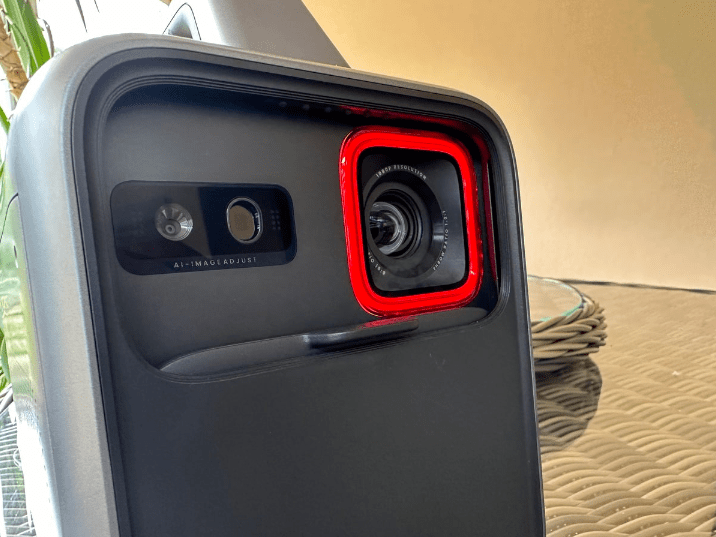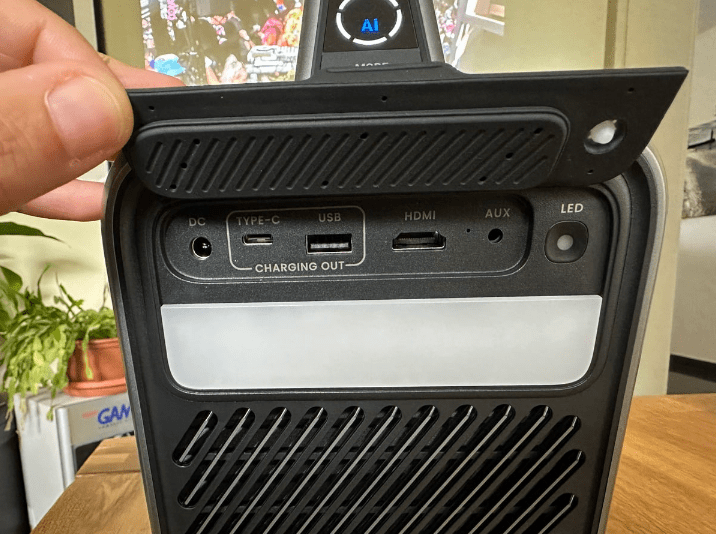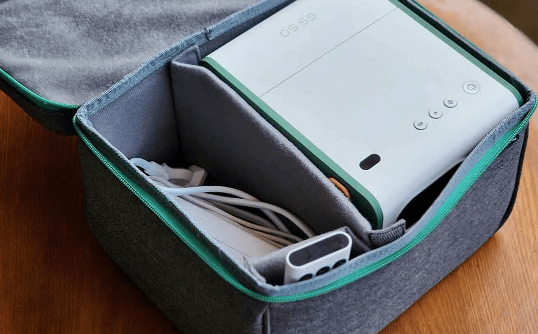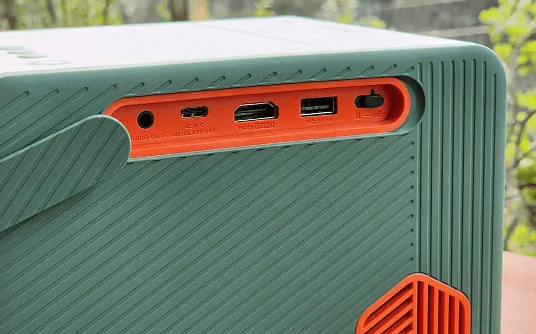At gagadget.com, your trust is our priority. We follow strict quality standards in our research, tests, and analysis of video projectors, to give you the best experience. Learn more
Nebula Mars 3 vs BenQ GS50
Hey everyone! Today, I'm pitting two feature-packed portable projectors head-to-head: the Anker Nebula Mars 3 and BenQ GS50. Both offer 1080p resolution, built-in streaming, powerful speakers, and grab-and-go convenience for backyard movie nights or gaming sessions. But their differences in brightness, battery life, durability, and more make each suited for different on-the-go scenarios.
I've spent quality time testing the Mars 3 and GS50 in various settings, from camping trips to impromptu park gatherings. In this comprehensive comparison, I'll highlight where each projector shines (literally and figuratively) to help you pick the perfect portable entertainment companion. Let's dive in!
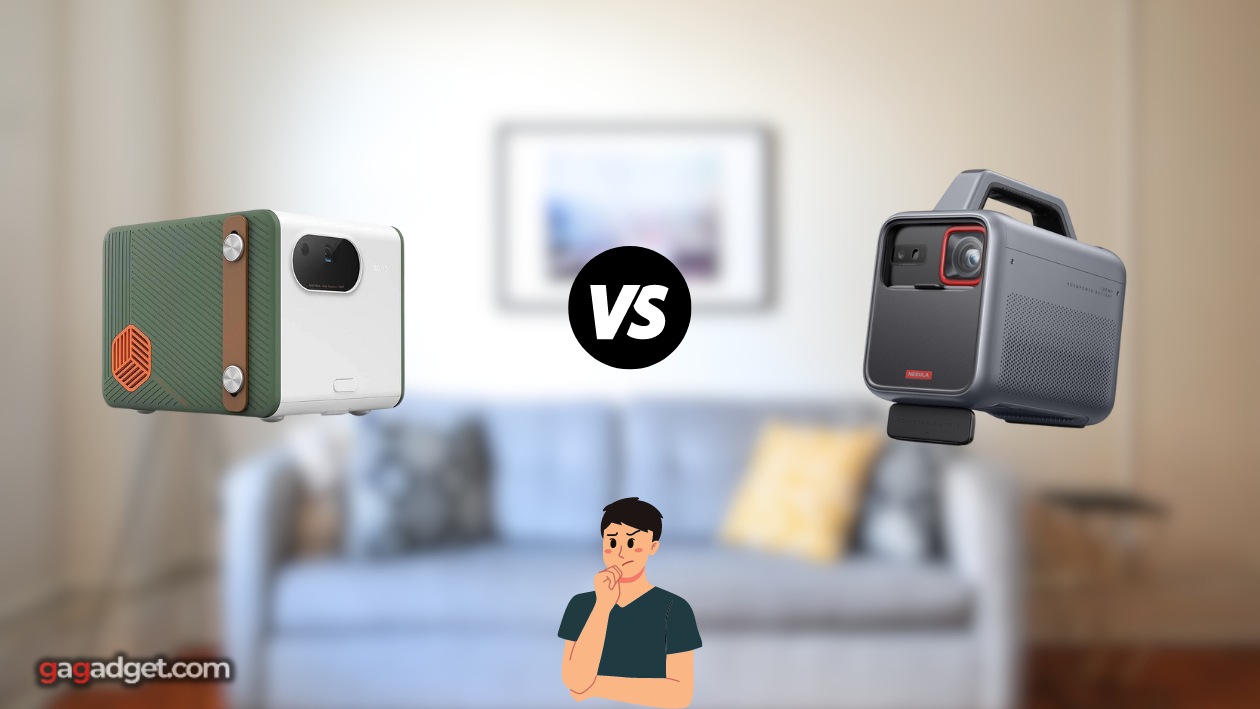
Nebula Mars 3 vs BenQ GS50: Quick Overview
I respect your time and aim to provide only the essential information, skipping the fluff.
Here's a brief summary for those short on time: The Nebula Mars 3 and BenQ GS50 both deliver 1080p resolution, Android TV streaming, and all-in-one audio in ultra-portable packages. The Mars 3 is brighter at 1,000 vs 500 ANSI lumens and has a longer 5-hour battery life. But the GS50 has a higher 100,000:1 contrast ratio, 2.1 speaker system, more placement flexibility, and sturdier build quality.
I recommend the Nebula Mars 3 for most buyers prioritizing portability. Its higher brightness, longer battery, and lighter weight are ideal for outdoor movie nights and on-the-go use. However, if you want the best sound quality, contrast, and durability in a compact form factor, the BenQ GS50 is worth the extra cash.
Table of Contents
- Nebula Mars 3 vs BenQ GS50: Full Comparison
- BenQ GS50 vs Nebula Mars 3: Design
- Nebula Mars 3 or GS50: Users Reviews
- Nebula Mars 3 and BenQ GS50 Alternatives
- Should You Buy the Mars 3 or GS50?
Nebula Mars 3 vs BenQ GS50: Comparison Table
| Specs | Nebula Mars 3 | BenQ GS50 |
| Image |
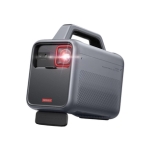
|
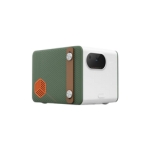
|
| Resolution | 1920 x 1080 (Full HD) | 1920 x 1080 (Full HD) |
| Brightness | 1,000 ANSI lumens | 500 ANSI lumens |
| Display Tech | 0.33" DLP | 0.47" DLP |
| Light Source | LED | LED |
| Light Source Life | 25,000 hours | 20,000 hours / 30,000 hours (Eco) |
| Throw Ratio | 1.20 (distance/width) | 1.21 (distance/width) |
| Max Image Size | 200" | 112" |
| Integrated Speaker(s) | 1 x 40W | 2 x 5W tweeters, 1 x 10W woofer |
| Battery Life | Up to 5 hours | Up to 2.5 hours |
| Keystone Correction | Auto vertical +/- 40° | Auto vertical +/- 40° |
| Connectivity | 1 x HDMI, 1 x USB, Wi-Fi, Bluetooth | 1 x HDMI 2.0, 1 x DisplayPort, 1 x USB-C, Wi-Fi, Bluetooth |
| Dimensions (W x D x H) | 6.30" x 10.00" x 6.10" | 5.90" x 7.50" x 5.90" |
| Weight | 3.94 lbs | 5.07 lbs |
| Noise | 28dB | 29dB / 27dB (Eco) |
| Release Date | July 2023 | October 2021 |
Starting with the basics, both the Nebula Mars 3 and BenQ GS50 provide crisp 1080p images up to 100"+ from their ultra-compact chassis. For impromptu outdoor movie nights, backyard gaming sessions, or even conference room presentations, the full HD resolution is plenty sharp. Neither projector does native 4K, but they can accept a 4K signal and downscale it effectively.
The Mars 3 doubles the brightness at 1,000 ANSI lumens vs the GS50's 500. This is a substantial real-world difference, allowing the Mars 3 to produce a watchable picture even with moderate ambient light (think string lights or fading dusk). In my testing, the GS50 really needed near-dark conditions to look its best. Advantage Nebula if you can't fully control the environment.
Another key difference is the throw distance. While both have a fixed focal length lens, the Mars 3's lower 40ms input lag makes it more suitable for casual gaming. The GS50's 120"+ max image size and ±40° keystone correction give it more placement flexibility - handy for various outdoor surfaces and angles. But the Mars 3's 200" maximum diagonal is best for larger groups.
You won't need to worry about plugging in dedicated speakers with either projector. The Mars 3 packs a punchy 40W mono driver, while the GS50 opts for a 2.1 configuration with dual 5W tweeters and a 10W woofer. Both deliver loud, crisp, and dynamic sound, with the GS50 offering slightly better stereo separation and bass response. Either is more than sufficient for a backyard movie.
Battery life is one of the Mars 3's biggest advantages. It can run for up to 5 hours on a single charge - enough for a double feature or extended gaming session. The GS50 tops out at around 2.5 hours, which is still solid but may require a mid-movie plug-in. Keep in mind these are best-case figures with volume and brightness reduced. Eco modes can help you eke out extra runtime.
Both projectors run a custom Android TV interface for easy access to streaming apps like Netflix, Disney+, and Prime Video. The pre-loaded selections and intuitive navigation make it a breeze to find content, while the downloadable app stores opens up a world of possibilities. You can also cast directly from your phone or tablet, or plug in a streaming stick for even more options.
Other notable extras include the GS50's adjustable kickstand (up to 15°), eye protection motion sensor (pauses video when objects get too close), and wider connectivity with HDMI 2.0 and DisplayPort. The Mars 3 offers automatic brightness adjustment based on ambient light, a slightly longer 25,000 hour LED life, and a lower 28dB fan noise (vs 29dB on the GS50).
BenQ GS50 vs Nebula Mars 3: Design
The Nebula Mars 3 and BenQ GS50 take decidedly different approaches to portable projector design. The Mars 3 opts for a taller, narrower stance with a carrying handle, while the GS50 has a shorter, wider frame with an adjustable kickstand.
Nebula Mars 3 Design
BenQ GS50 Design
The Mars 3 has a taller, narrower profile at 6.3" wide x 10.0" deep x 6.1" tall. The integrated carrying handle on top makes it easy to grab and go, as do the rubberized feet for stable placement on various surfaces. Build quality is solid but the mainly plastic construction doesn't feel as rugged as the GS50's.
On the other hand, the GS50 has a shorter, squatter stance at 5.9" x 7.5" x 5.9". This makes it a bit more stable on uneven outdoor terrain, aided by the adjustable kickstand that can tilt the lens up to 15°. An included soft carry case adds protection during transport. The aluminum alloy frame and IPX2 splash resistance also bolster its all-weather credentials.
Controls are minimal on both projectors. The Mars 3 has capacitive buttons on top for power, volume, and Bluetooth mode, along with a manual focus wheel up front. The GS50 puts its power button and focus wheel on the left side, with the ports on the right. Both rely mainly on the included Android TV remotes for navigation.
Speaking of ports, the Mars 3 keeps things simple with a single HDMI 2.0 input, USB-A port, and 3.5mm audio output. The GS50 adds a second HDMI 2.0, DisplayPort 1.4, and a USB-C with video, data, and charging support. This gives it more flexibility for connecting multiple devices at once, or using a laptop's USB-C port as a display output.
Aesthetically, the Mars 3 has a more playful, lifestyle-oriented look with its two-tone grey color scheme and cupholder-esque top recess. The GS50 is all business with its matte silver aluminum casing and exposed heatsink fins. Neither will win any beauty contests but both exude a sense of high-tech cool.
Nebula Mars 3 or GS50: Users Reviews
Let's see what actual buyers have to say about their experiences with the Nebula Mars 3 and BenQ GS50 portable projectors:
Nebula Mars 3 Owner Reviews
Praises: "The auto-brightness and battery life on this thing are game-changers for backyard movie nights. I'm getting 4+ hours of runtime with a clear picture even at dusk."
"Setup could not be simpler - just turn it on, connect to Wi-Fi, and you're streaming Netflix or gaming in minutes. The Android TV interface is intuitive and responsive."***
Drawbacks: "Contrast is definitely lacking compared to my friend's BenQ. Black levels are more like dark grey and colors look a bit flat, especially in darker scenes."
"The built-in speakers are decent for the size but still pretty thin and tinny. For a truly immersive movie experience you'll want to connect a soundbar or external audio."
BenQ GS50 Owner Reviews
Praises: "I'm blown away by the picture quality from such a small projector. The colors are rich and accurate, black levels are inky, and 1080p content looks super crisp."
"The 2.1 speaker system is no joke - it gets loud and bassy enough to fill my entire backyard. I rarely feel the need to connect external audio."***
Drawbacks: "Don't expect a vivid picture in daylight or even at dusk - the 500 lumens is only bright enough for pretty much pitch black viewing."
"Battery life is mediocre at 2-3 hours tops. For longer movie nights you'll definitely want a spare power bank or extension cord."
Overall, owners of both projectors are very satisfied with the big screen experience and all-in-one functionality. Nebula Mars 3 buyers rave about the high brightness, long battery life, and quick Android TV streaming setup. Some ding the middling contrast and built-in speaker quality but are thrilled with the grab-and-go convenience.
BenQ GS50 users are consistently impressed by the projector's vivid color, deep black levels, and powerful built-in sound. The rugged design and wide connectivity options also earn praise for outdoor versatility. The main complaints are the low brightness (which necessitates near-dark conditions) and lackluster battery life compared to the Mars 3.
Both models receive kudos for their compact, well-built designs, advanced features like auto focus and keystone, and ease of streaming or screen mirroring. While neither is flawless, the vast majority of buyers say they deliver an impressive level of performance and functionality for the price. If you keep your expectations in check, you'll likely be thrilled with either.
Nebula Mars 3 and BenQ GS50 Alternatives
If you're not totally sold on the Mars 3 or GS50, here are a couple other excellent portable projectors to consider:
- ViewSonic M2: A 1080p DLP model with 1,200 LED lumens, a short 1.23 throw ratio, Wi-Fi connectivity, and a 3-hour battery life. Lighter and brighter than the GS50 for easier daytime use;
- XGIMI Halo+: A 1080p LED projector with 900 ANSI lumens, Android TV 10, a 59ms input lag, and a 2.5-hour battery. A strong Mars 3 competitor with a much faster response time for gaming.
The ViewSonic M2 is a compelling BenQ GS50 alternative for those seeking higher brightness and a shorter throw ratio. Its 1,200 LED lumen output is over double the GS50's, allowing for a watchable picture in moderately lit environments. And the 1.23 throw can produce a 100" image from just 8.5 feet. You sacrifice some contrast, color accuracy, and build quality but gain a lot of flexibility.
In the Mars 3's weight class, the XGIMI Halo+ is its most direct competitor. While a smidge dimmer at 900 ANSI lumens, it's every bit as smart and long-lasting with Android TV 10 and a 2.5-hour battery. More importantly for gamers, the Halo+ cuts input lag to 59ms - nearly half the Mars 3's. If you plan to play faster-paced titles like shooters or fighting games, that extra responsiveness could be worth the trade-offs.
Should You Buy the Mars 3 or GS50?
After extensive hands-on testing, it's clear the Anker Nebula Mars 3 vs BenQ GS50 are two of the most capable and convenient portable projectors on the market. With their bright 1080p pictures, built-in streaming, all-in-one audio, and grab-and-go designs, both make it incredibly easy to host an epic movie night or gaming session pretty much anywhere. You really can't go wrong with either one.
For most buyers, I recommend the Anker Nebula Mars 3. Its higher 1,000-lumen brightness is a major practical advantage for outdoor viewing - even at dusk or with some ambient light, the picture remains clear and colorful. The 5-hour battery life also outlasts most portable models, while the sub-4-pound weight and integrated handle make transport a breeze. Toss in seamless Android TV, auto brightness, and a reasonable price and you have a nigh-unbeatable all-arounder.
That said, the BenQ GS50 earns my vote for videophiles and audio enthusiasts. The ultra-high contrast, wide color gamut, and Cinematic Color tech produce an exceptionally dynamic and accurate picture - easily one the best I've seen from a portable unit. And the 2.1-channel speaker system with discrete tweeters and woofer puts most TV soundbars to shame. Build quality is also best-in-class with the aluminum frame, IPX2 weatherproofing, and automatic lens cover. If pristine A/V performance is paramount, it's a justifiable step up.
Whichever model you choose, you're in for a treat the next time you Netflix and chill under the stars. The massive 1080p picture, punchy sound, and effortless streaming will make huddling around a phone or laptop seem downright quaint. With zero setup hassle and hours of cable-free playtime, the Mars 3 and GS50 are the ultimate backyard big screen blockbuster machines.
Go Deeper:
